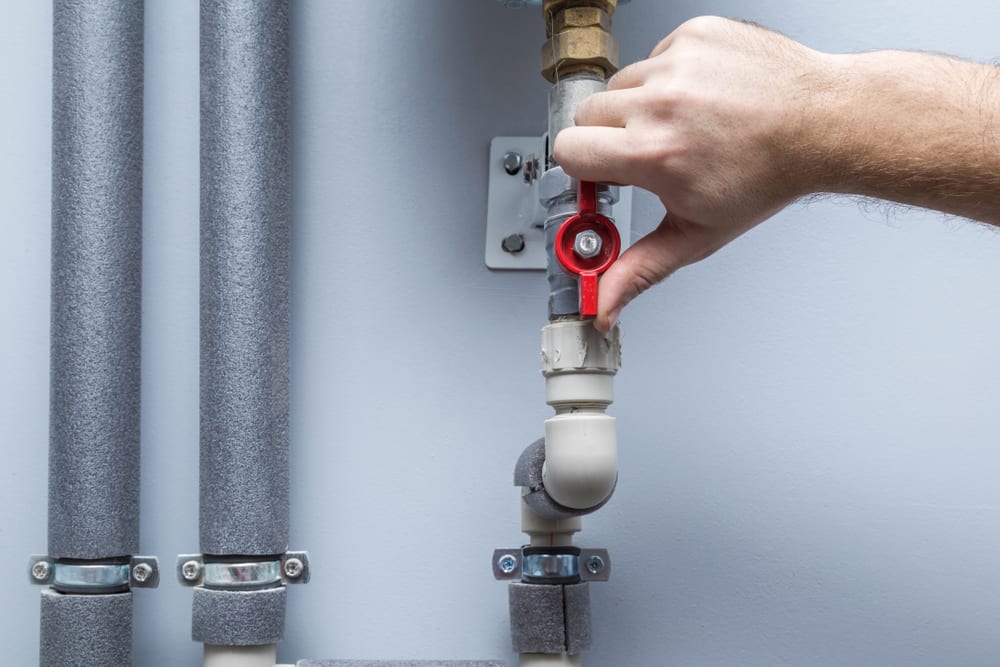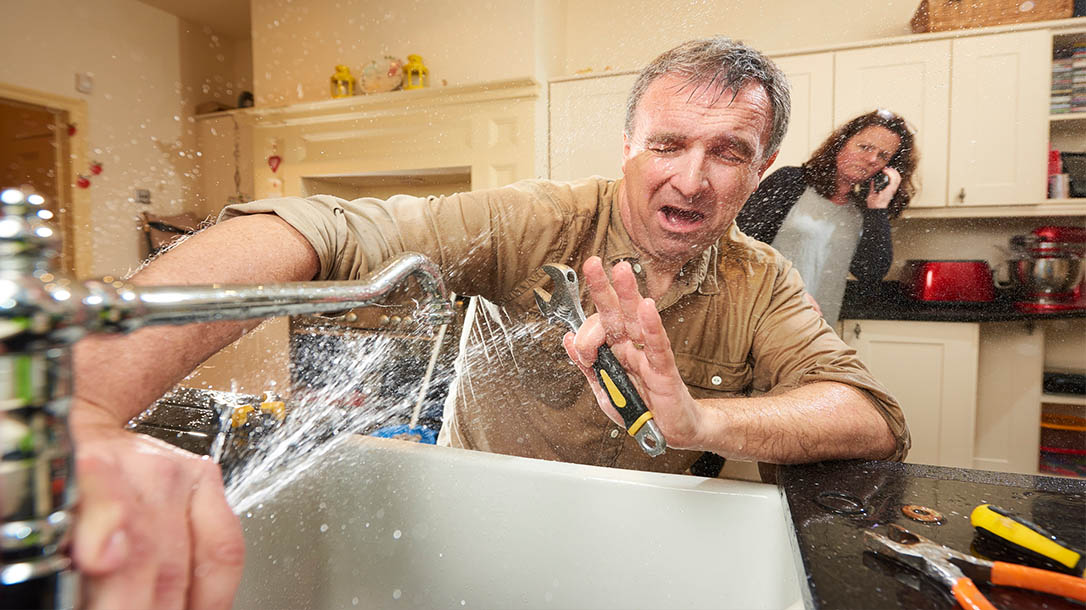When It's Important to Resolve a Leaking Faucet
When It's Important to Resolve a Leaking Faucet
Blog Article
They are making several great pointers on 4 Common Reasons for a Leaky Faucet as a whole in this great article following next.

Dripping faucets may seem like a minor inconvenience, yet their impact surpasses just the inconvenience of the sound. From wasting water to incurring unneeded economic prices and wellness dangers, neglecting a dripping faucet can result in various consequences. In this short article, we'll look into why it's important to address this typical home problem immediately and effectively.
Waste of Water
Environmental Influence
Dripping faucets add considerably to water wastage. According to the Epa (EPA), a single tap dripping at one drip per secondly can throw away more than 3,000 gallons of water each year. This not just strains water resources but also affects ecosystems and wild animals dependent on them.
Step-by-Step Guide to Taking Care Of a Dripping Faucet
Devices Needed
Prior to attempting to repair a dripping faucet, collect the needed tools, consisting of a flexible wrench, screwdrivers, substitute parts (such as washers or cartridges), and plumber's tape.
Typical Faucet Issues and Their Solutions
Identify the type of faucet and the certain problem causing the drip. Common issues include worn-out washing machines, corroded valve seats, or defective O-rings. Describe supplier guidelines or on-line tutorials for detailed assistance on repairs.
Financial Expenses
Raised Water Bills
Beyond the environmental impact, leaking taps can pump up water bills considerably. The gathered waste over time converts into greater energy costs, which could have been avoided with timely fixings.
Possible Residential Or Commercial Property Damages
Furthermore, extended trickling can cause harm to fixtures and surfaces bordering the faucet. Water accumulation can trigger discoloration, deterioration, and also structural concerns if left unattended, resulting in additional fixing expenses.
Wellness Problems
Mold And Mildew and Mold Growth
The continuous presence of moisture from a dripping faucet develops an ideal setting for mold and mildew and mold growth. These fungis not only compromise interior air top quality yet additionally posture health and wellness risks, especially for individuals with respiratory system conditions or allergies.
Waterborne Conditions
Stationary water in trickling faucets can end up being a breeding ground for bacteria and other virus, boosting the threat of waterborne illness. Impurities such as Legionella microorganisms thrive in stationary water, possibly resulting in significant ailments when consumed or breathed in.
DIY vs. Specialist Repair service
Benefits and drawbacks of DIY Repair Service
While some may try to fix a leaking faucet themselves, DIY repairs come with their very own set of challenges. Without proper understanding and devices, do it yourself attempts can aggravate the problem or bring about insufficient repair work, extending the trouble.
Benefits of Working With a Specialist Plumber
Employing a professional plumber ensures that the underlying root cause of the dripping tap is attended to efficiently. Plumbing technicians have the proficiency and tools to detect and repair faucet concerns effectively, conserving time and reducing the risk of additional damage.
Ecological Duty
Specific Contribution to Preservation
Taking obligation for repairing dripping taps lines up with broader initiatives toward water conservation and environmental sustainability. Every individual's actions jointly make a significant influence on protecting precious sources.
Sustainable Living Practices
By focusing on timely repair services and taking on water-saving practices, individuals contribute to sustainable living methods that profit both present and future generations.
Preventive Measures
Routine Maintenance Tips
To stop dripping faucets, do routine upkeep such as cleaning up aerators, evaluating for leaks, and replacing damaged parts promptly. Furthermore, consider installing water-saving gadgets or updating to much more reliable fixtures.
Relevance of Prompt Repair Works
Resolving trickling taps as soon as they're observed prevents further water waste and potential damage, eventually conserving both water and cash in the long run.
Effect On Residential Or Commercial Property Value
Perception of Well-Maintained Residential Or Commercial Property
Maintaining a residential property in good condition, including resolving upkeep issues like trickling faucets, enhances its perceived worth and value amongst possible buyers or tenants.
Influence on Resale Worth
Features with properly maintained plumbing fixtures, consisting of faucets, command higher resale worths in the realty market. Dealing with trickling taps can add to a positive perception during home inspections and settlements.
Conclusion
Resolving a leaking faucet exceeds plain comfort; it's a crucial action towards saving water, lowering economic costs, and securing health and property. Whether with DIY fixings or professional aid, taking action to deal with dripping faucets is a little yet impactful way to promote responsible stewardship of sources and add to a much healthier, a lot more sustainable future.
How to Fix a Leaky Faucet: Step-by-Step Repair Guide
A leaky faucet may seem like a simple annoyance, but if it's not fixed promptly, that leak could cost hundreds to potentially thousands. From water damage to mold, mildew, and high water bills, even a tiny leak can be catastrophic if left unattended. Damage like this can even affect the overall value of your home, so it's important to take the right approach for leaky faucet repair. You may need the help of a plumber in some cases, but we've got a few tips you can try on how to fix a leaky faucet before calling the pros.
Four Faucet Types
When you're learning how to fix a leaky faucet, the first step is knowing what kind of faucet you're working with! There are four common types.
Cartridge Faucets
Cartridge faucets come in one- or two-handled varieties. In one-handled cartridge faucets, hot and cold water combines in a single cartridge. In the two-handled versions, hot and cold water are controlled separately and mixed in the faucet.
Ball Faucets
Ball faucets have a single lever you push up and down to adjust the pressure and rotate to change the temperature. A slotted metal ball controls the amount of water allowed into the spout.
Compression Washer Faucets
They're the oldest type of faucet, but they're still used in many homes — especially older ones. Compression faucets have two separate handles that, when turned, raise or lower the washer that seals a water valve. This valve stops water from flowing through the faucet when it is turned off.
Disc Faucets
Disc faucets rarely need to be repaired due to their maintenance-free design. The water flow is controlled by two discs — the upper one raises and lowers against a fixed lower disc, creating a watertight seal. If your disc faucet starts leaking, you may need to replace the seals or clean residue buildup from the inlets.
Fixing a Leaky Faucet
Step 1: Turn Off the Water
Whether you're learning how to fix a leaky bathtub faucet or how to fix a leaky kitchen faucet, always turn off the water supply to your working area when you're fixing a leak. The last thing you want is a flood added to your list of things to fix.
Look for the shutoff valves below your sink or around the tub and turn them clockwise to stop the water flow. If your faucet doesn't have shutoff valves, you may need to turn off the water for the whole house. Check to make sure it's off by turning the faucet on. If nothing comes out, you're ready to start the repair.
Step 2: Take Apart the Faucet
How you disassemble your faucet depends on the type of fixture you have. You can use a flathead screwdriver to remove the caps on top of the handle or handles for cartridge and compression faucets. Inside, you should see handle screws. Unscrew these with a screwdriver to remove the handle.
Disc- and ball-style faucets will typically have an inlet screw near the handle, and removing that will reveal the interior of the faucet.
Detach the Valve Stem
For cartridge- and compression-style faucets, you'll see the inner valve stem or cartridge once you remove the faucet handles. If you have a compression faucet, unscrew the brass valve stem. If you have a cartridge faucet, pull out the cartridge. If your cartridge has been in place for a while, it may require some tools or extra force to remove it due to mineral deposits.
Examine and Replace Parts
Once you've removed the parts, check them out to confirm what needs to be replaced. You may see corroded rubber washers, O-rings, stems, or cartridges. On a ball-style faucet, check the seats and springs for damage.
If you need to repair a leaky disc faucet, check the inlet and seals on the lower disc.
Once you determine what parts must be replaced, visit your local hardware store. Bring the damaged parts with you to ensure you can purchase the correct components to replace them.
Clean Valves and Faucet Cavity
If you've removed a stem or cartridge, you may notice mineral buildup in the faucet's threads. Use white vinegar to clean the valve seat by soaking it for a few minutes, then scrub it away with a soft toothbrush and rinse with warm water. You can also clean the interior of the faucet in the same way.
Reassemble the Faucet
Once your faucet is cleaned and the required parts have been replaced, it's time to reassemble it. Put the pieces back together and slowly turn the water supply back on. Doing this slowly is crucial because too much initial water pressure can damage the new hardware you've just installed.
https://homewarranty.firstam.com/blog/how-to-fix-leaky-faucet

Do you appreciate more info about Leaky Faucets: Why They Happen & What to Do About Them? Leave feedback below. We'd be pleased to find out your reactions about this blog post. We are looking forward that you visit us again before long. If you liked our blog post kindly do not forget to pass it around. Thank-you for taking the time to read it.
Report this page